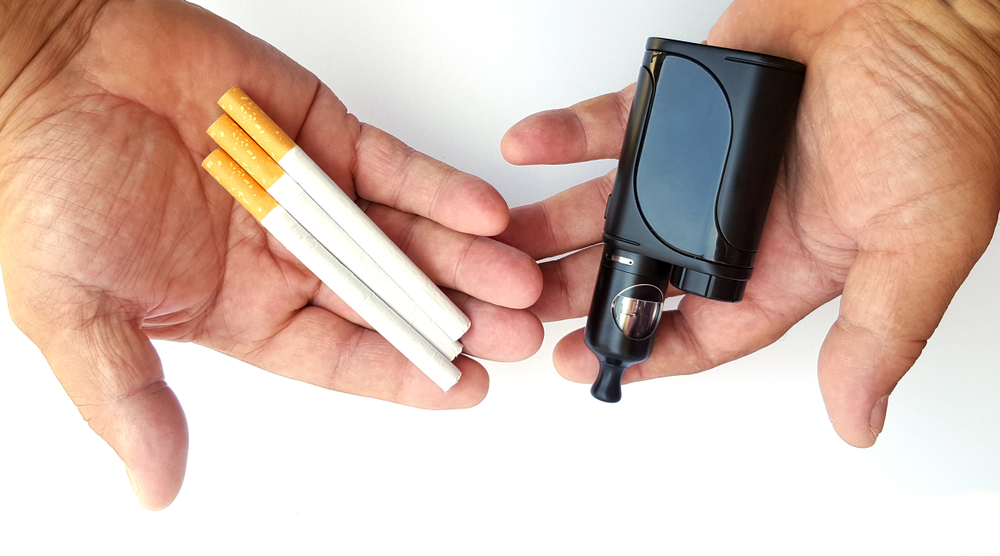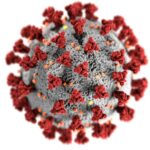Teenager Who Vaped Equivalent Of 50 Cigarettes A Day Given ‘Shock’ Diagnosis After Coughing Up ‘Pints’ Of Blood

At 16, Jayden thought he had it all figured out. Life was about having fun, making memories, and living in the moment. Vaping? Just another harmless habit—one that everyone around him seemed to be doing. It wasn’t smoking, after all. No tar, no harsh smell, just smooth flavors and cool vapor. What could go wrong?
A lot more than he ever expected.
One night, everything changed. A sudden, violent coughing fit. A wave of panic. And then—the sight that sent his heart racing. It wasn’t just a dry throat or a bad reaction. It was something far worse.
Doctors were left stunned. His mother was in disbelief. And Jayden? He was faced with a reality he never saw coming.
What he thought was harmless had left his lungs severely damaged—a diagnosis that no teenager should ever have to hear.
This isn’t just about Jayden. It’s about a generation being deceived—led to believe that vaping is nothing more than a harmless trend. But beneath the fruity flavors and sleek designs, there’s a truth that’s been ignored for too long.
Coughing Up Pints of Blood—The Night Vaping Nearly Killed Him
And for Jayden, that truth came at a devastating cost.
“Teenager who vaped equivalent of 50 cigarettes a day given ‘shock’ diagnosis after coughing ‘pints’ of blood” – LADbible #SmartNews https://t.co/CiXIaiUb1u
— Sylvia Muhammad (@sweet_ie) February 5, 2025
For Jayden, vaping was just part of everyday life. It was everywhere—at school, at parties, in the hands of friends who swore it was harmless. No tar, no harsh smell, just smooth flavors and cool vapor. A modern habit that seemed to carry none of the dangers of smoking.
That illusion shattered the night his body betrayed him.
It started like any other evening—drinks, a swim, laughter filling the air. But as the hours passed, something felt off. A tightness in his chest. A burning sensation in his throat. Then came the cough. At first, just a minor irritation. Then, a deep, forceful hacking that refused to stop.
And then he saw it—blood.
Not just a speck. Not just a streak. Pints of it. Thick, dark, and pooling in the sink as his body convulsed. His hands shook. His heart pounded. His mind raced with questions he never thought he’d have to ask at sixteen. Was this real? Was he dying?
His mother searched for answers. Maybe it was something he ate. Maybe it was the drinks. Maybe it was just some freak reaction. The doctors weren’t sure either. They suspected a stomach ulcer, a bad reaction to food, or exhaustion. But when the bleeding didn’t stop—even after returning home to Birmingham—it became clear. Something was seriously wrong.
Jayden underwent test after test. X-rays. Bloodwork. Lung scans. But nothing stood out. His lungs looked clear. His vitals were normal. It wasn’t until doctors performed an endoscopy—sending a tiny camera down his throat—that the truth was revealed.
His lungs weren’t just irritated. They were severely scarred.
Damage so extensive that even the doctors were stunned. Damage they didn’t expect to see in someone so young. Damage caused by excessive vaping.
Jayden had unknowingly inhaled the equivalent of 50 cigarettes a day. Day after day, vape after vape, believing it was safe. But his body was proof that it wasn’t.
And the worst part? He wasn’t alone.
How many more teenagers are unknowingly damaging their lungs, believing the same lie?
The Hidden Cost of Vaping: What It Does to Your Lungs
Jayden’s story is alarming, but it’s not unique. Across the world, more young people are suffering from unexplained lung damage, persistent coughing, and breathing difficulties—all traced back to vaping. What was once advertised as a cleaner, safer alternative to smoking is proving to be anything but.
The problem is that most people don’t realize what they’re actually inhaling. E-cigarettes don’t just produce harmless vapor. The mist that fills the air carries ultrafine particles, heavy metals, volatile chemicals, and synthetic nicotine—ingredients that the lungs were never designed to handle. While cigarette smoke takes years to leave visible damage, vaping operates in stealth mode, attacking the respiratory system before most users even recognize the warning signs.
Doctors have already identified severe lung conditions linked to vaping, including EVALI, or E-cigarette or Vaping-Associated Lung Injury. First recognized in 2019, this disease causes inflammation deep inside the lungs, leading to permanent scarring, difficulty breathing, and, in extreme cases, respiratory failure. Another risk is “popcorn lung,” a condition caused by diacetyl, a chemical found in some vape flavors. It scars the tiny air sacs in the lungs, restricting airflow and making it harder to breathe. Unlike other lung conditions, popcorn lung has no cure.
For teenagers, the risks are even greater. Because the lungs are still developing, they are more vulnerable to permanent damage. A 2023 study in the American Journal of Respiratory and Critical Care Medicine found that adolescent vapers had significantly lower lung function than their non-vaping peers, with long-term exposure leading to increased rates of chronic bronchitis and other respiratory diseases. The more they vaped, the worse their lung capacity became.
A Single Puff Brought It All Back
 Image Source: Shutterstock
Image Source: Shutterstock
For a while, Jayden thought he was in the clear. After his terrifying hospital visit, he swore off vaping. The bleeding stopped, his breathing improved, and for the first time in months, he felt like he had control again.
But addiction has a way of whispering in the background, convincing you that one more time won’t hurt.
Months later, on his birthday, he made a decision that he instantly regretted. It wasn’t much—just a few puffs, just for the feeling, just to remind himself of the rush he used to love. But within seconds, his body gave him an answer he wasn’t expecting. His chest tightened. His throat burned. And then, the dreaded sensation—his lungs rejecting the very air he was trying to breathe.
The cough came back. And with it, the blood.
It hit him immediately. The damage hadn’t healed. His lungs weren’t getting stronger with time. The moment he inhaled, it was like he had never stopped at all.
That was the moment he knew—this wasn’t just a bad habit. It wasn’t something he could shake off with willpower alone. His body had been permanently changed, and a few seconds of temptation had been enough to remind him just how fragile his lungs had become.
He never touched a vape again. But the pain in his chest never fully left either. Now, he waits for his next medical test, hoping the damage hasn’t progressed even further. Hoping he didn’t already push his body past the point of no return.
The scariest part? He thought he had more time. He thought quitting was enough. But once vaping takes its toll, the effects don’t just disappear.
Why Are So Many Teens Falling Into This Trap?
 Image Source: Shutterstock
Image Source: Shutterstock
Vaping wasn’t something Jayden ever planned to get addicted to. It just happened. A few puffs here and there, passed around at parties, a habit that felt effortless—until it wasn’t.
His story isn’t unique. Millions of teenagers around the world are caught in the same cycle, drawn into vaping by a combination of peer pressure, stress relief, and the false promise that it’s a “safer” alternative to smoking. But behind the fruity flavors and sleek designs, there’s something far more dangerous at play.
Nicotine addiction is a silent grip. Unlike traditional cigarettes, many vapes contain high concentrations of nicotine in an easily inhalable form. A single pod can deliver as much nicotine as a pack of cigarettes. For young users, this means addiction develops quickly, often before they even realize it.
But it’s not just the nicotine that’s keeping teenagers hooked. Vaping is designed to be easy—discreet, accessible, and socially acceptable in a way that traditional smoking never was. The bright packaging and sweet flavors make it feel harmless, while the absence of a lingering smell allows teens to hide their habit from parents and teachers.
And then there’s the mental trap—I can stop whenever I want. The belief that because vaping doesn’t feel as harsh as smoking, the damage isn’t real. That quitting is just a matter of choice.
Jayden thought the same thing. Until his lungs told him otherwise.
The reality is, once the addiction takes hold, stopping isn’t just about willpower. Nicotine rewires the brain, reinforcing the need for more. And when paired with the physical damage that builds up silently over time, many don’t realize what’s happening until it’s too late.
So how do you break free from something designed to keep you hooked? And more importantly, how do you stop before the damage is irreversible?
How to Quit Before It’s Too Late
 Image Source: Shutterstock
Image Source: Shutterstock
Quitting isn’t just about saying I’ll stop. It’s about breaking a cycle that was designed to keep you trapped. Vaping companies know exactly what they’re doing. The sleek designs, the sweet flavors, the false sense of control—it’s all part of the plan to keep users coming back for more.
But here’s the truth: You don’t have to be a prisoner to this habit.
The first step is recognizing that quitting isn’t about willpower alone. Nicotine is one of the most addictive substances on the planet. It hijacks the brain, making you crave more before you even realize you’re hooked. This isn’t just a bad habit—it’s a chemical dependence that needs to be treated like one.
If you’re trying to quit, here’s what actually works:
- Understand the withdrawal process. The first few days will be tough. Irritability, cravings, headaches—it’s your body fighting to regain control. But those symptoms don’t last forever. The more you push through, the weaker the cravings become.
- Replace the routine. A big part of addiction is habit. If you vape when you’re bored, stressed, or socializing, find something to replace it. Exercise, chewing gum, or even deep breathing can help train your brain to detach from the need.
- Get support. You don’t have to do this alone. Talk to friends, family, or even a professional who can help you through the process. There are quit programs, nicotine replacement options, and support groups designed to make the transition easier.
- Remind yourself why you’re quitting. Jayden didn’t think vaping would cost him his health. Now, he’s living with the damage. Don’t wait until you’re sitting in a doctor’s office, gasping for breath, to realize the risk isn’t worth it.
Most importantly, if you haven’t started, don’t. The easiest way to break free from addiction is to never let it take hold in the first place.
Jayden thought he had time. He thought he was in control. But addiction doesn’t wait for you to notice—it builds in the background, silent and steady, until one day, your body gives you a warning you can’t ignore.
So ask yourself: Are you in control? Or is vaping controlling you?
A Message That Needs to Be Heard
Jayden thought vaping was harmless—until his own body proved him wrong. Now, he lives with the consequences, a reminder that what seemed like a simple habit had done permanent damage. His story isn’t unique. Millions of young people are walking the same path, believing they’re in control, unaware of the risks until it’s too late.
If you’re vaping, stop before your body forces you to. If you haven’t started, don’t let the marketing, the peer pressure, or the illusion of safety pull you in. Once the damage is done, there’s no undoing it.
This isn’t just about one person’s story—it’s about an entire generation at risk. The choice is yours, but so are the consequences. Will you take control now, or will you wait until it’s too late?
Featured Image Source: Shutterstock
Sources:
- Cancer Research UK. (2024, December 4). Does vaping cause popcorn lung? https://www.cancerresearchuk.org/about-cancer/causes-of-cancer/does-vaping-cause-popcorn-lung?utm
- American Lung Association. (n.d.). E-cigarette or vaping Use-Associated Lung Injury (EVALI). https://www.lung.org/lung-health-diseases/lung-disease-lookup/evali?
Loading...
Related Content
 When Science Shows Our Bones Can Rise Again
When Science Shows Our Bones Can Rise AgainBy Prince Ea





